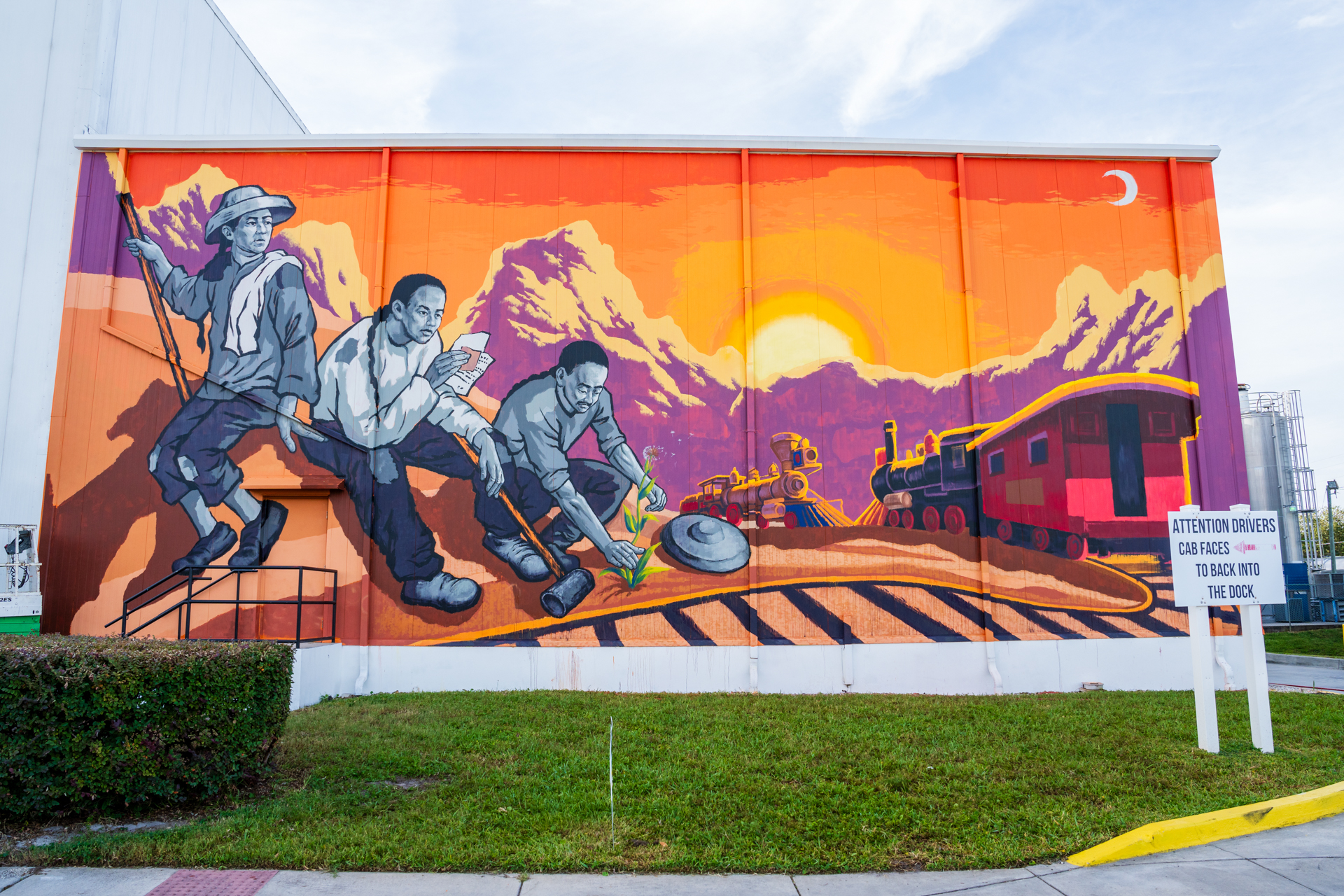Chenlin Cai / 蔡陈林
About Chenlin Cai / 蔡陈林
Based out of: Philadelphia
Artist Statement
This mural design is inspired by the little-known story of the Chinese American frontier’s contribution to the construction of the First Transcontinental Railroad, also known as the Pacific Railroad. It captures the spirit of their remarkable journey for American dreams and reminds their invaluable role in shaping US nation’s progress.For a century until now, their stories and contributions still remain hidden from the public awareness. During the 1869 celebration marking the railway’s completion, surprisingly and sadly, none of these Chinese laborers was found on the news photos taken at that time. The completion of the First Transcontinental Railroad was a significant achievement that wouldn’t have been possible without the hard work and dedication of many Chinese laborers who made up a substantial part of the workforce.
In 1919, the remaining three elderly Chinese laborers were invited to participate in the 50th anniversary celebration of the completion of the First Transcontinental Railroad. They served as representatives of the countless, hardworking, and often forgotten Chinese American frontiers who contributed significantly to this historic endeavor. Their inclusion in the celebration was a significant step towards recognizing the vital role played by Chinese American laborers in building the railroad.
With a poignant re-imagination of history, I took these three figures by my brushstroke back to the pivotal moment—the celebration of the railroad's completion in the 19th century. Though they stand in the background, obscured by the jubilant crowds reveling in this monumental achievement, their presence is etched into the annals of history.
One among them is captured in the act of reading a letter from his family, a symbol of his profound longing for his distant hometown and beloved family left behind. Another, with eyes fixed upon the distant horizon, embodies their integral contribution to the development and construction of the United States, the promise of a brighter future on the horizon. The third figure planted a budding grass which crowned with a resilient dandelion, representing the Chinese American people taking root in a foreign land. This act signifies their determination to not only survive but thrive, passing down their cultural and historical legacies to the generations that follow.
The choice of black and white in these figures, reminiscent of traditional Chinese ink painting, serves as a visual bridge to the past, emphasizing the historical memory and enduring significance of this moment in time. Together, these elements paint a vivid and heartfelt tableau that ensures the indelible remembrance of these unsung heroes in the tapestry of American history.
The color scheme of the mural draws its inspiration from the iconic orange color of Florida and the elements of the James Museum's facade, infusing the mural with a sense of heritage and connection to the past and present. In the distance, the resplendent golden mountains symbolize a daunting chapter in the railroad construction—the Sierra Nevada Mountains. Here, countless Chinese laborers made profound sacrifices, with many giving their lives to surmount this challenging terrain. Remarkably, they achieved a construction miracle, completing an astonishing 10 miles in a single day. The term “Golden Mountain” holds dual significance, as it not only signifies this treacherous landscape but also serves as the Chinese American translation for San Francisco, where the early Chinese laborers embarked on their immigration journey, forging their place in American history.
Against the backdrop of this rugged terrain, the sun rises, casting its warm glow—a beacon of rising hope. In contrast, the moon emerges, a tearful emblem of homesickness, rooted in traditional Chinese culture.
Together, these celestial bodies embody the intricate duality of the Chinese American laborers; experience, marked by aspirations for a brighter future in a new land and the enduring ache for their distant homes. This harmonious fusion of colors, symbols, and cultural elements results in a poignant masterpiece that pays homage to the indomitable spirit and complex emotions of those who built the First Transcontinental Railroad, ensuring their legacy shines brightly through the ages.

